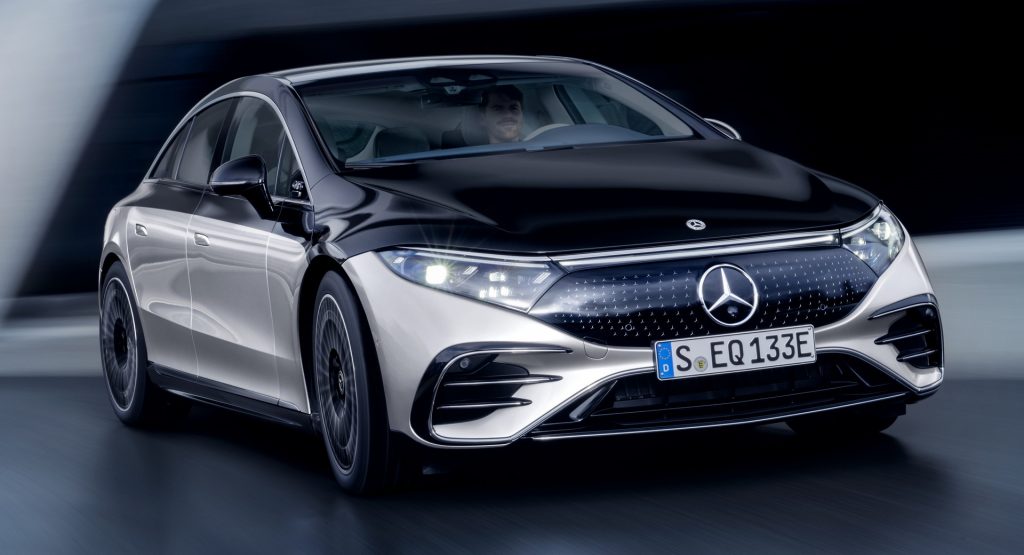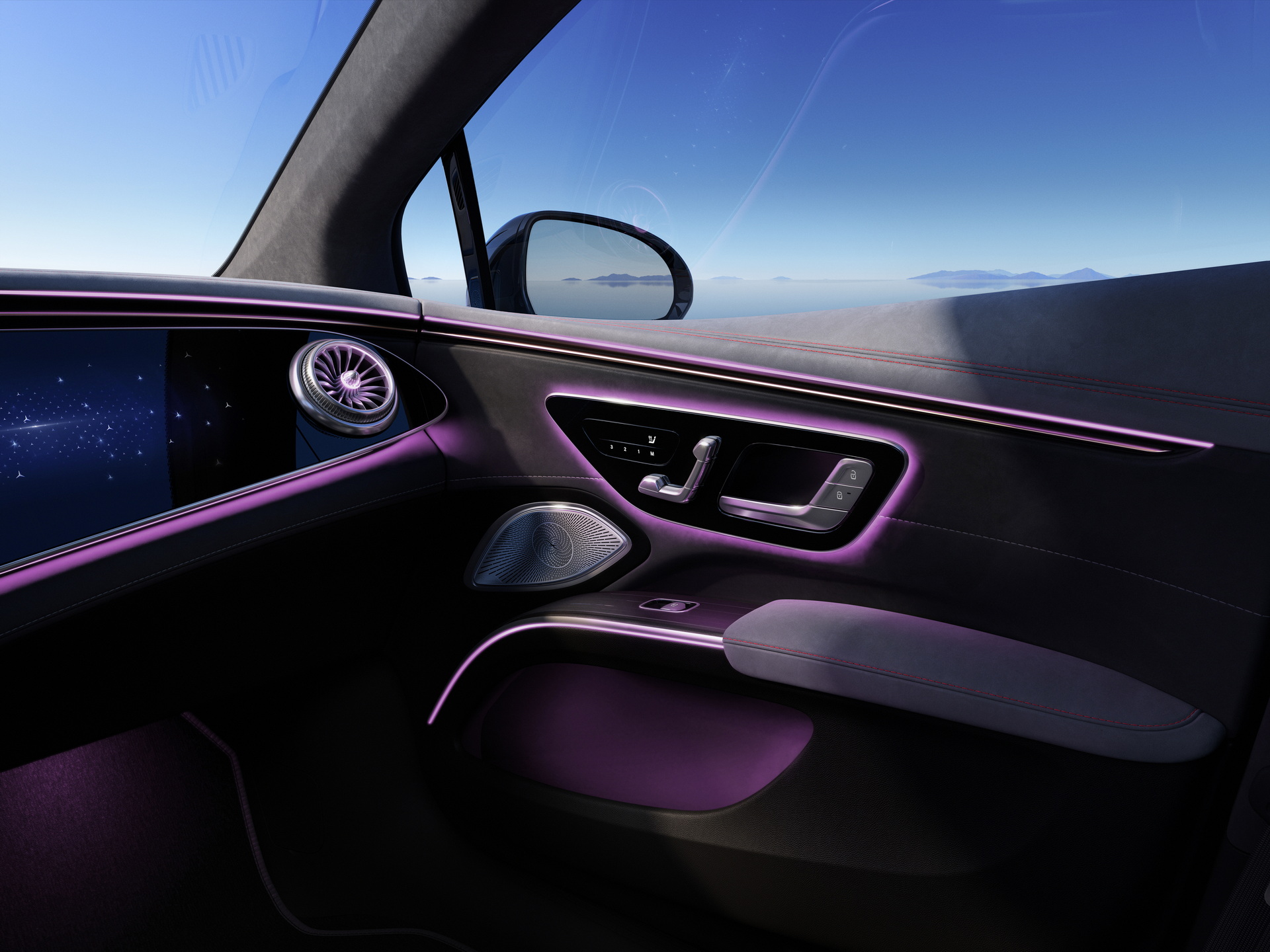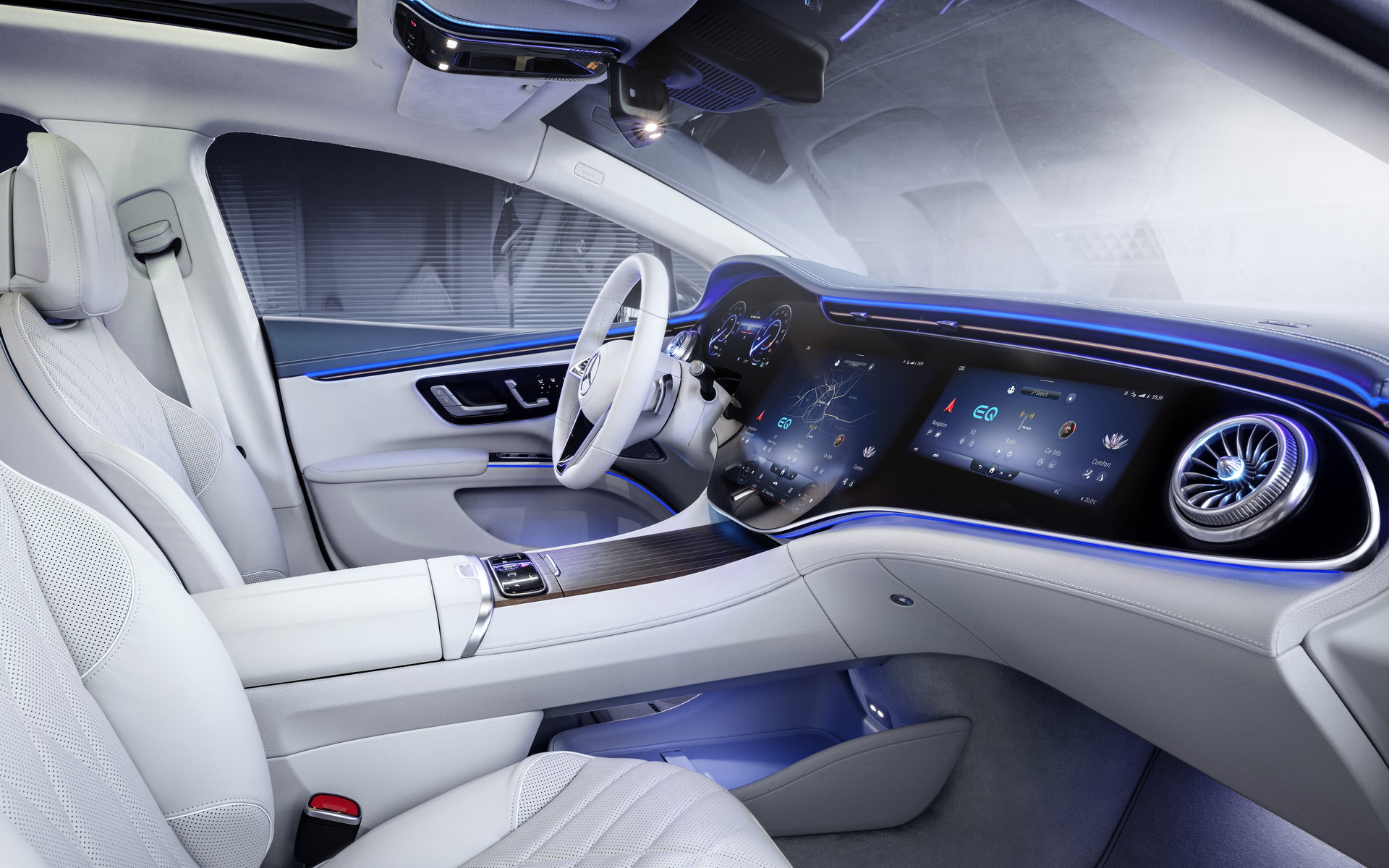The benefits of putting cameras in place of rearview mirrors are well known at this point. Fewer blind spots, less drag, more tech. But Mercedes won’t offer the technology on the EQS for one, simple reason: your inner ear.
Speaking to Automotive News Europe, Daimler CEO Ola Kallenius argued that Mercedes doesn’t want to add technology for the sake of technology to their cars. They want to be at the cutting edge of good tech, not any tech.
“The studies so far have found that a not-insignificant portion of customers, when they have a screen inside the car watching what’s happening behind them, they get motion sickness,” said Kallenius.
Read More: 2022 Mercedes EQS EV Has 479-Mile Range, Opens And Closes Its Own Doors
Other companies, like Audi and Lexus, have started offering cameras instead of side mirrors. When the Alliance of Automobile Manufacturers petitioned the National Highway Traffic Safety Administration to allow the technology in the U.S., it cited research indicating that side mirrors increase drag by two to seven percent.
Kallenius argues, though, that at low speeds around town the benefits are negligible. Sure, on the highway, not having a big mirror parachuting through the air is an advantage, but at lower speeds the energy required to power the screens almost outweighs the aero gains. That said, Mercedes has already dedicated quite a bit of energy to powering screens in the EQS thanks to that hyperscreen.
It’s not like the EQS needs much help with range, though. Mercedes’ first electric sedan gets a whopping 479 miles of range on the European test cycle. It will also get you to 62 mph (100 km/h) in 4.3 seconds and on to a top speed of 130 mph (210 km/h).
The Mercedes-Benz EQS goes on sale this fall. Prices have yet to be announced.










